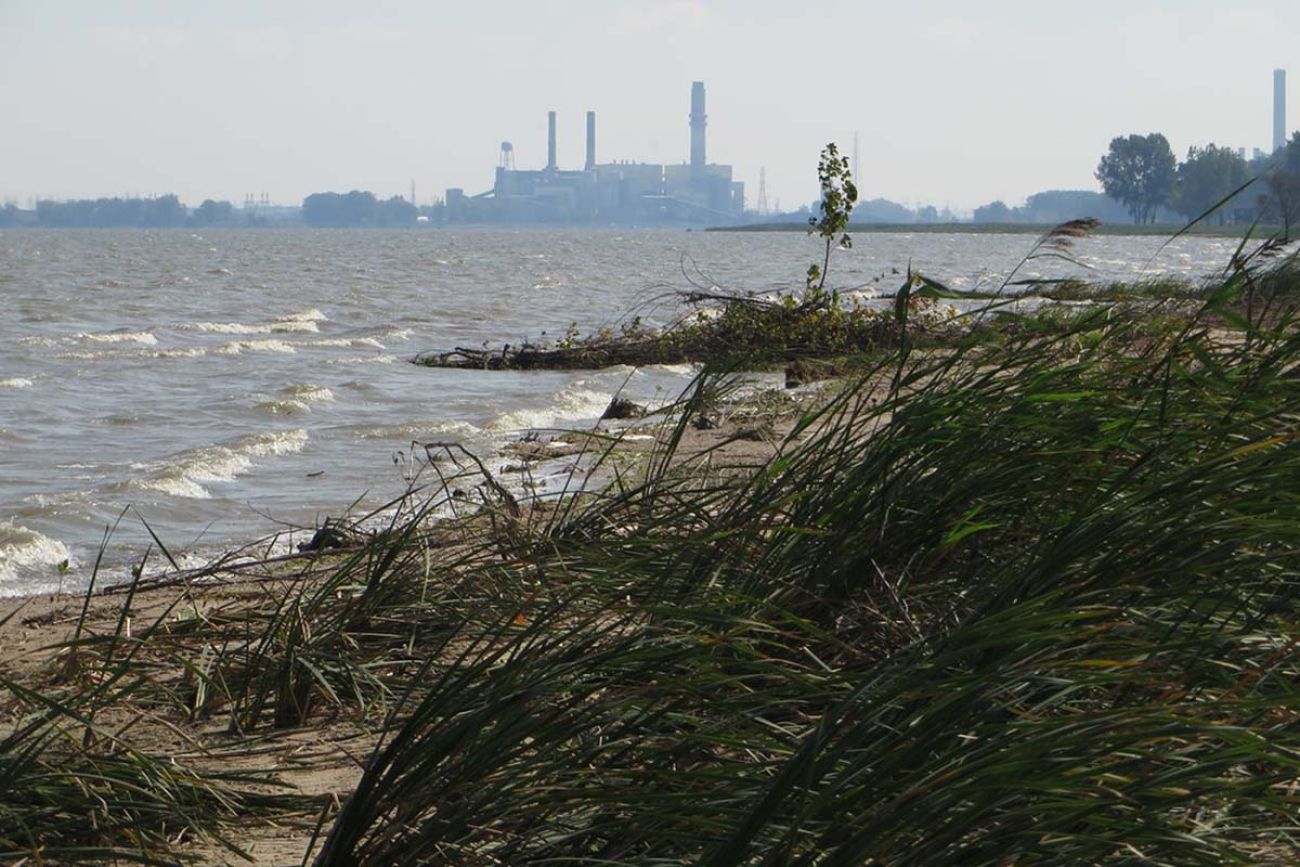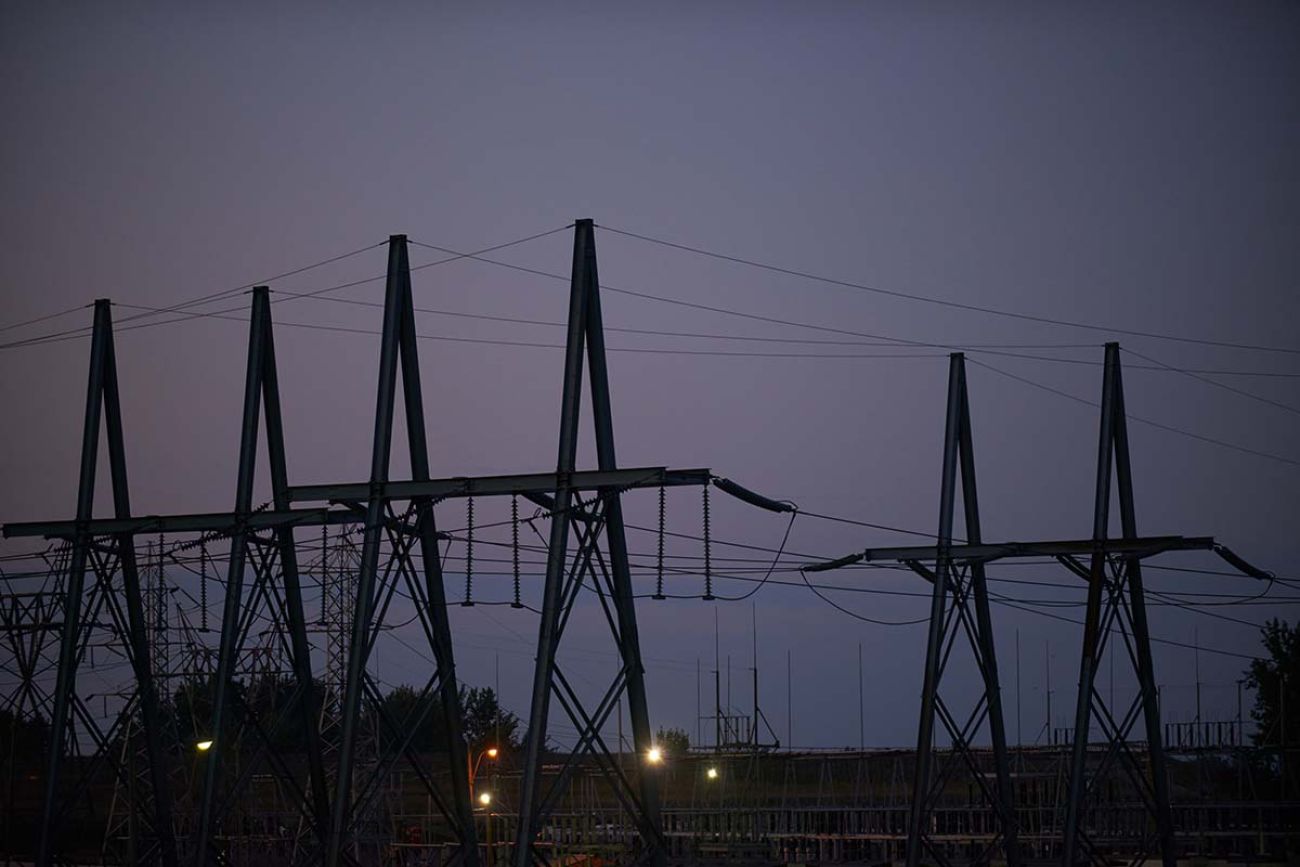Could parks and beaches replace coal plants in Michigan? Bay City may find out

- Plans call to reuse a Consumers Energy plant near Bay City site with solar panels and public beaches
- Proponents say the plan could become a national model amid a wave of coal plant closures
- The clean energy transition means dozens of Midwestern coal plants, located on prime waterfront property, are slated to go offline
Ash dumps and smokestacks may one day give way to solar panels and sandy beaches at the shuttered Dan E. Karn coal-generating plant on the Saginaw Bay.
With support from plant owner Consumers Energy and local and regional officials, the Saginaw Basin Land Conservancy this month released an ambitious blueprint to transform the 2,400-acre site into a mix of renewable energy and public parkland and kayak launches.
Proponents call it a “major breakthrough” for a property along the Saginaw Bay that has blocked public access for 65 years.
“It’s a once-in-a-generation opportunity to reclaim a geographically and ecologically incredible spot, right where one of Michigan’s largest rivers meets the Great Lakes,” said Zachary Branigan, the land conservancy’s executive director.

And if Howard Learner gets his way, the blueprint in Bay County could become a national model.
Hundreds of coal plants, most of which sit along waterfronts, are set to close nationwide in the next few years. As president and executive director of the Chicago-based Environmental Law & Policy Center, Learner has spent years pushing utilities and communities to adopt a “Power Plants to Parklands” strategy for reusing the ground underneath them.
The goal, he said, is to “recapture lakefront and riverfront property that has been hidden behind fences and gates” for decades.
Related:
- Michigan clean energy transition gets tricky in the U.P.
- Wind wars: Wind turbines put green energy on the ballot in mid-Michigan
- Michigan House passes climate change reform, mandating clean energy by 2040
The news at the Karn plant may be a sign of traction as Michigan utilities prepare to close several more coal generators along thousands of waterfront acres in the coming years.
A few big details have yet to be worked out, such as costs and who would fund the transformation.
Figuring out those details is “extraordinarily important,” Learner said, “But we're now on the path of, how do we make this work?”
Kensington-by-the-bay
Consumers has participated in discussions about the 2,400-acre Karn property’s future for years, since announcing plans to close its two coal-fired generators. They were decommissioned last year, though two natural gas and fuel oil units will keep operating until 2031.
Within months after closing the coal plants, Consumers emerged with a plan to use much of the property for an 85-megawatt solar development, replacing some of the electrical power and tax revenue the coal generators once provided.
The conceptual plan released Sept. 12 envisions a series of “parks within a park” on the property’s remaining 400 or so acres, with amenities opening gradually as Consumers cleans the property. A smaller area along the Saginaw River could see mixed-use development and a waterfront promenade.
Roads and multi-use trails would link kayak launches, picnic areas, playgrounds and beaches. Forests and prairies would be planted on the coal-ash landfills.
Branigan sees the varied amenities at southeast Michigan’s Kensington Metropark as an example of what’s possible.
“The idea is to try to create a lot of diverse activities on the site,” he said. “If you're interested in the water, there would be that. If you're interested in rustic trails, maybe there would be that. If you're interested in paved trails, or picnic pavilions, or a nature based playground for the kids, all of those things could be available.”
Consumers’ spokesperson, Tracy Wimmer, called the document a “positive long-term vision for the property,” but added that safety and regulatory hurdles would need to be cleared in order to open land up public access,
Consumers plans to keep working with community groups as it decides the property’s future.
A wave of closures presents opportunities
Proponents see the “Power Plants to Parklands” concept as a win for communities and utilities, which are expected to close 173 coal plants nationally by 2030 as cheap renewable energy and tougher climate regulations prompt a fossil fuel phase-out.
The Environmental Law & Policy Center is in talks with utility leaders about repeating the blueprint at Consumers Energy’s Campbell JH Campbell plant in West Olive, which is slated to close next year, and DTE’s former Trenton Channel plant, which closed in 2022.
Because coal plants need vast quantities of water to operate, they are usually situated on prime waterfront real estate.
That makes them prime candidates for recreational lands, Branigan said: “It's a shame that such an important part of our geography is not available to the community."

Adding green energy to former coal sites often makes sense, because the properties are already connected to transmission lines that deliver electricity to the grid. That makes the project cheaper and quicker to get up and running.
“From an economic and land use perspective, the cheapest place to build a renewable energy project is on land we already own,” said Wimmer.
Including public green space in the plan can be a good PR move that helps utilities access federal financial incentives, said Sarah Mills, a University of Michigan expert on energy policy who directs the Center for EmPowering Communities within the university’s Graham Sustainability Institute.
As coal plants continue to close, Mills said, “I definitely expect that we’re going to see more of it.”
Michigan Environment Watch
Michigan Environment Watch examines how public policy, industry, and other factors interact with the state’s trove of natural resources.
- See full coverage
- Subscribe
- Share tips and questions with Bridge environment reporter Kelly House
Michigan Environment Watch is made possible by generous financial support from:
Our generous Environment Watch underwriters encourage Bridge Michigan readers to also support civic journalism by becoming Bridge members. Please consider joining today.
See what new members are saying about why they donated to Bridge Michigan:
- “In order for this information to be accurate and unbiased it must be underwritten by its readers, not by special interests.” - Larry S.
- “Not many other media sources report on the topics Bridge does.” - Susan B.
- “Your journalism is outstanding and rare these days.” - Mark S.
If you want to ensure the future of nonpartisan, nonprofit Michigan journalism, please become a member today. You, too, will be asked why you donated and maybe we'll feature your quote next time!






